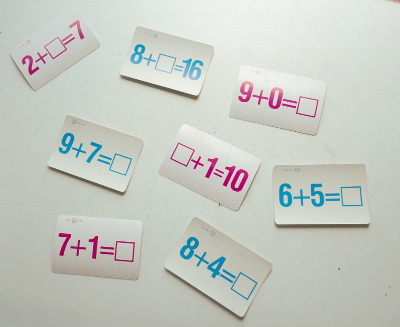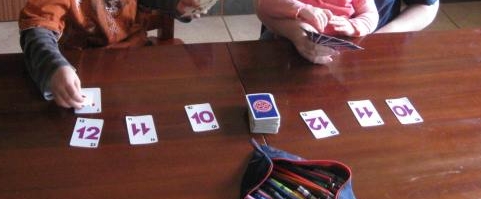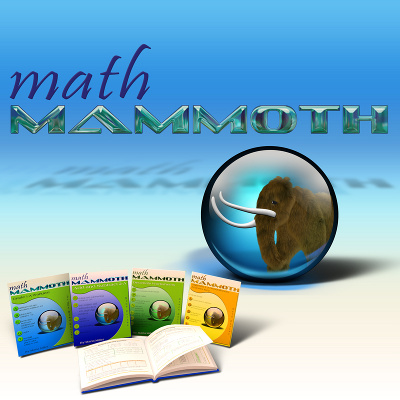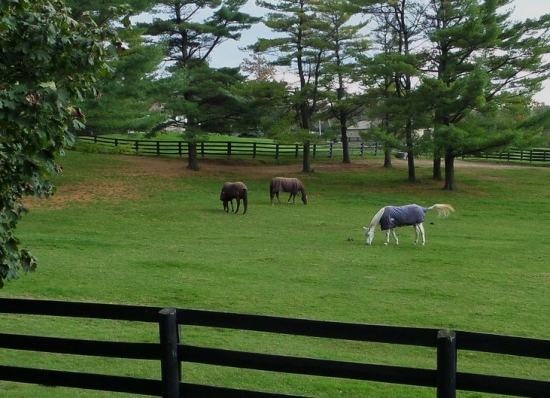 Hello, and welcome to April collection of tips & news. 😀
Hello, and welcome to April collection of tips & news. 😀
|
1. Math Mammoth news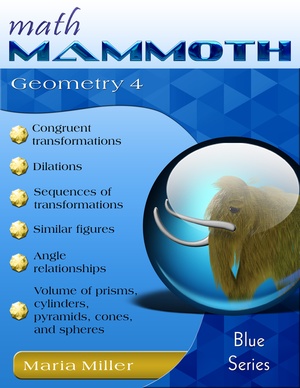 Math Mammoth Geometry 4 is now available! This book covers geometry topics in the 8th grade level: geometric transformations (translations, rotations, reflections, dilations), common angle relationships (vertical angles, corresponding angles, alternate interior angles, etc., and interior and exterior angles of a triangle), and volume of cylinders, spheres, cones, and pyramids.
Math Mammoth Geometry 4 is now available! This book covers geometry topics in the 8th grade level: geometric transformations (translations, rotations, reflections, dilations), common angle relationships (vertical angles, corresponding angles, alternate interior angles, etc., and interior and exterior angles of a triangle), and volume of cylinders, spheres, cones, and pyramids.
Download free sample pages:
Contents
Reflections in the Coordinate Grid Similar Figures, Part 1 More Angle Relationships with Parallel Lines Volume Problems Along with this announcement, some of you might enjoy knowing that I am also working on some other 8th grade materials, and will eventually build an entire 8th grade curriculum. This will take 1-2 years but meanwhile, I will publish what is ready piece-by-piece as topical books in my Blue Series. The next one will be on exponents & scientific notation. |
2. When to use flashcardsSomeone asked this one time about using FLASHCARDS, and it's a VERY good question!"Hi Maria! We will be using MM for the first time starting next month (light blue grade 1) and I was wondering if there is any recommendation of when to work on addition facts/flashcards throughout the worktexts, or if we just do that on our own with the appropriate lessons? We're switching from A Beka, which was flashcard heavy and had it all scripted, so I'm just trying to make sure I'm doing it correctly 🙂 Thanks!"Math Mammoth is NOT scripted. It allows you to be creative in your teaching and adapt things to your child in various ways. For example, you're not limited to study only in one chapter at a time. If your child does better by studying 2-3 topics at a time, feel free to have them work in 2-3 chapters at a time (though, some chapters because of their topics are best studied in the order they appear in the book, but usually you have liberty to study clock, measuring, geometry, and money at most any time you wish). Also, I've always advocated the thought that the MOST CRUCIAL element in instruction is NOT the book, but the teacher, and that we shouldn't ever become "slaves" to the books, not even to Math Mammoth books. The best possible situation is when the instruction is tailored to the student's individual needs. Your Math Mammoth book is just a TOOL you can use to help teach your child. You as the teacher are still in total control, and you have the liberty to decide IF to use flash cards, and WHEN to use them. Children's needs are so variable that I really don't want to dictate when a child should review addition facts, or how. The curriculum does provide a list of online games and resources for that purpose (in the introduction of each chapter). You may use flashcards if you find them effective AND if they don't cause math anxiety. However, I don't want to put too much emphasis on flashcards, because too many adults have, because of their experiences in school, ended up viewing mathematics as "flashcards, speed tests, and memorization of rules" — which it is NOT! We should emphasize the notion that there are MANY ways to come up with the answer, and that the thinking processes, strategies, and patterns are more important than successfully and quickly producing the correct answer. That said, it is definitely very helpful to know all your addition facts by memory — but it is even more important to learn a set of strategies for mental addition, because that "number sense" (being able to break apart and combine numbers in various ways in order to calculate something) is a crucial skill in order to succeed in mathematics. Hope this helps! |
3. The "Funnest/Bestest Math Game Ever"(In a child's opinion!)Looking through my old newsletters, I found this addition game by Amy in South Africa! It's simple and fun, and only uses number cards (could use playing cards or Skip-Bo cards or whatever). |
4. Math Mammoth reviewsRead a BUNCH of Math Mammoth reviews here: SchoolHouse Review Crew reviews on Math Mammoth Scroll down to the bottom of the post to see a list.😊 |
5. A math story problem about horsesI have mentioned in th past about changing math problems from closed to open.About eight years ago my then 5th grader was facing a page in Math Mammoth 5 filled with word problems that had to do with conversions between measuring units. So... I asked her to choose and solve 3 problems from that page, and THEN write her own story problem where the solver will need to convert measuring units. This is what she came up with. I guess I should have guessed the topic. :^) There are three horses in a paddock, and each weighs a different amount. The first horse weighs 13,760 ounces, the second 1/2 ton, and the last one 1,100 pounds. What is the weight of all the horses together, in pounds? No calculator allowed. She needed some help, because in her original version, the weights of the horses were not realistic — but it was good to have a discussion on that, as well. Try it yourself! Ask your children to make story problems! You might be surprised. 😊 |
6. Just for fun!
Thanks for reading! 🙂 Feel free to forward this issue to a friend/colleague! Subscribe here. Till next time, Maria Miller |
| Privacy & your personal data | Contact | Math Mammoth freebies | Placement tests |
| Complete curriculum | Eat to LIVE (TRULY live) | Visit us on Facebook | Newsletter Archives |
